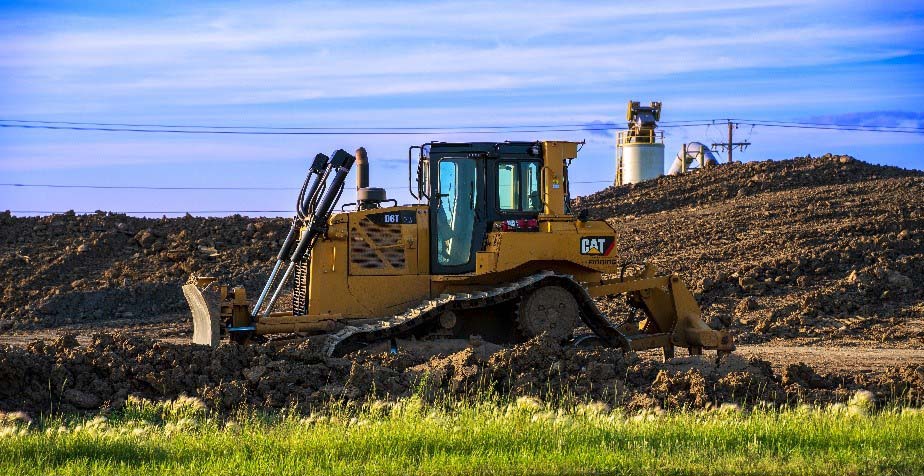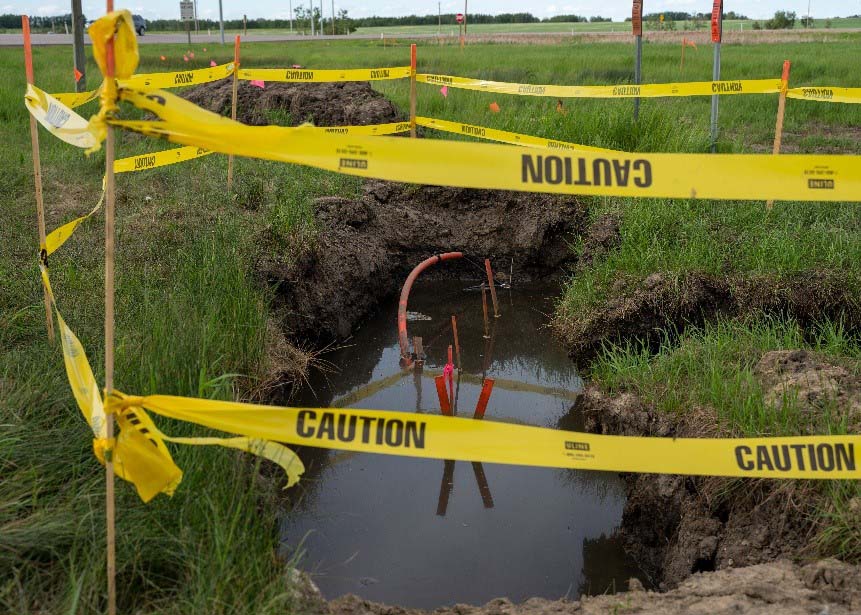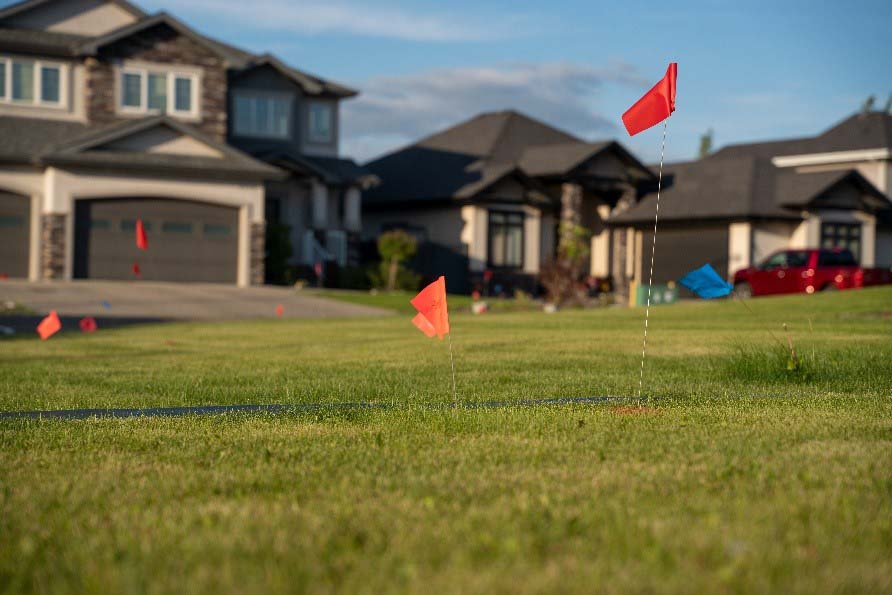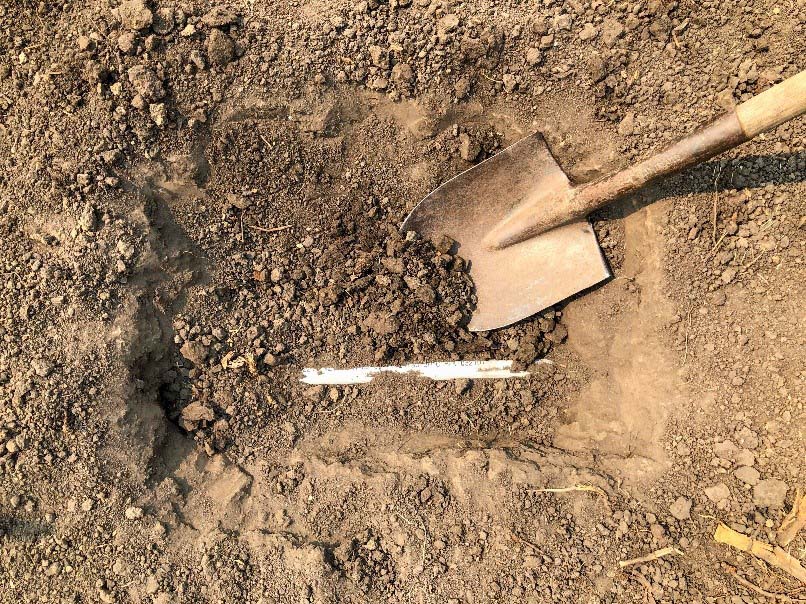Ground disturbance involves many different activities and may be performed for a variety of reasons.
Common examples include:
- New home construction or exterior yard renovations (fence-building etc)
- Installing new underground utilities
- performing maintenance and repairs on existing buried facilities

This work may take place on private land, on public land by utility companies, or on federal land by pipeline companies. Any activities including digging, excavating, trenching, drilling, and landscaping are considered ground disturbance. Whenever ground disturbance is performed, there is a risk of damaging buried facilities.
What’s the real risk?
Simply put, damages to buried facilities poses a significant risk to worker safety, public safety, and the environment. This can create social and economic impacts when buried facilities are damaged. Underground infrastructure supplies goods and services that are essential to the function of today’s society.

Utility outages for homes, businesses, health care facilities, and airports can result in substantial financial costs and impact on day-to-day life for the general public.
Beyond this, is there a personal risk?
Real-world examples:
- A father and son were killed, and two others were injured, in a natural gas pipeline explosion while working on a farm field
- Three workers burned in a fire and explosion after hitting a pipeline
- A community evacuated after a gas line was damaged
- A worker electrocuted after contacting underground electrical cables while digging a pit near a home
- Everyone that is involved in ground disturbance, including homeowners, contractors and equipment operators, need to be aware of the dangers of damaging buried facilities, and how to prevent them
What can I do and how can we manage the risks?
The basic prevention process significantly reduces the chances of damage.
Typically, initial steps start with requesting locates and hand exposing.
- Requesting locates:
 Whether you are working on your own private property or someone else’s, buried facilities should ALWAYS be located and marked before ground disturbance begins. Many jurisdictions offer this as a free service which is contracted out locators in your area . In Alberta, go to www.clickbeforeyoudig.com to get the contact information for your notification centre. Plan ahead to ensure you have sufficient time for this service to be completed. Buried facilities may be noted with flags, stakes, paint, or other materials and a diagram may be available from the locator.It’s important to note that not all buried utilities are registered and therefore may not be flagged by your locator. Private landowners or contractors may have run facilities such as water lines, irrigation or electrical & gas lines to exterior structures. A private locate-request may be needed to find these sort of items.
Whether you are working on your own private property or someone else’s, buried facilities should ALWAYS be located and marked before ground disturbance begins. Many jurisdictions offer this as a free service which is contracted out locators in your area . In Alberta, go to www.clickbeforeyoudig.com to get the contact information for your notification centre. Plan ahead to ensure you have sufficient time for this service to be completed. Buried facilities may be noted with flags, stakes, paint, or other materials and a diagram may be available from the locator.It’s important to note that not all buried utilities are registered and therefore may not be flagged by your locator. Private landowners or contractors may have run facilities such as water lines, irrigation or electrical & gas lines to exterior structures. A private locate-request may be needed to find these sort of items. - Hand Exposing:
 Locates however, are not always accurate. Flags and other markers may not indicate exactly where the buried facility is. For this reason, any work near the buried facility should be hand exposed so that its location and alignment can be confirmed. Common methods include using hand tools, like round edged shovels, or even a hydrovac. Always follow the specific utility operator’s instructions for acceptable methods.Although a buried facility can still be damaged by hand tools, the risk of a severe outcome is much less when compared to damage by mechanical equipment such as a backhoe or auger.
Locates however, are not always accurate. Flags and other markers may not indicate exactly where the buried facility is. For this reason, any work near the buried facility should be hand exposed so that its location and alignment can be confirmed. Common methods include using hand tools, like round edged shovels, or even a hydrovac. Always follow the specific utility operator’s instructions for acceptable methods.Although a buried facility can still be damaged by hand tools, the risk of a severe outcome is much less when compared to damage by mechanical equipment such as a backhoe or auger.
Focus on Safety first
No one benefits from damages to buried facilities. Most ground disturbance activities are done to improve our quality of life, but it can come with unnecessary risks and consequences if we fail to perform the work safely.
For more information on standards and practises, visit the Canadian Common Ground Alliance. Many training resources are available online for both individuals and organizations.
Guest blog provided by Astec Safety. Chris Richards, is the Manager of Program Development responsible for all ASTEC SAFETY course development, both online and classroom. Chris leads instructor certification and professional development activities, with emphasis on the USP/ABCGA endorsed Ground Disturbance programs. He is a certified Energy Safety Canada Auditor and is a highly regarded throughout the professional training market as a content expert on the industrial safety courses authored by ASTEC SAFETY.
Popular Online Ground Disturbance for Supervisors 201
Related online training courses:
- Ground Disturbance 201
- Ground Disturbance Awareness (Saskatchewan Edition)
- Ground Disturbance Awareness Online
- Hydrovacing and Facility Verification
- Digging Awareness (CAN)
- Utility Advanced Line Locating (UALL) CAN Edition
- Introduction to Underground Facility Locating
- Utility Advanced Line Locating

